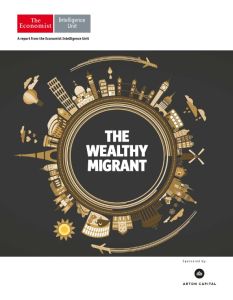Melden Sie sich bei getAbstract an, um die Zusammenfassung zu erhalten.

Melden Sie sich bei getAbstract an, um die Zusammenfassung zu erhalten.
The Economist Intelligence Unit
The Wealthy Migrant
EIU, 2015
Was ist drin?
Countries that roll out the welcome mat to rich immigrants can gain from their investment capital and business acumen.
Recommendation
Private wealth and cross-border migration have increased markedly over the past decade, and these trends have combined to swell the ranks of wealthy migrants. Some countries, particularly those with aging populations, are making the most of this growing cohort through residency and citizenship programs that often require foreign nationals to make financial and business contributions. The Economist Intelligent Unit surveyed a sample of members in this elite club to understand their motivations and experiences. getAbstract recommends the revealing results to human resources professionals and executives thinking of relocating overseas.
Summary
About the Author
The Economist Intelligence Unit is an independent research and analysis organization.





















































































































Comment on this summary